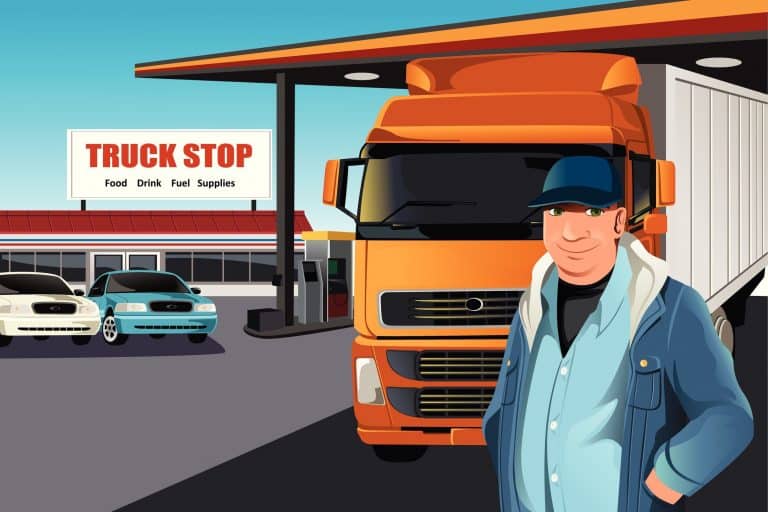My dilemma is this! I own a trucking company that I bought last year when it was a two truck and driver company. Business has been good and we have been growing where we now have 20 drivers 22 trucks and will be hiring more drivers. Our routes have expanded from local to the surrounding states. We strive to give quality and timely service to all our clients. The company has a good reputation with a result that we are getting bigger. Success as I never imagined and I am excited at the future prospects.
Not too long ago, the manager of another trucking company and I had an enjoyable lunch talking about business issues involving the running and operation of a fleet of trucks. We talked about the hiring of drivers, truck maintenance, payroll issues, trucking logbook issues and how to get along with the Federal Motor Carrier Safety Administration (FMCSA) and all of the regulatory requirements besides coping with the local and state requirements, some of which are pretty onerous. It is enough to make one’s head go dizzy with all of the requirements.
He mentioned the drug and alcohol testing requirements specified by FMCSA. He told me that several trucking companies ignore those requirements thinking that they will never get caught or even audited. He also informed me that some trucking companies will use providers that offer compliance services at a very reduced cost and promise compliance at a very reduced price. He told me that a couple of Public Interest Exclusion (PIE) decisions have recently been issued by the Department of Transportation (DOT) to now ex- providers of drug and alcohol testing programs that provided drug and alcohol testing services for the trucking industry but were determined to not be compliance programs that met the regulatory requirements. The end result was that these service providers are barred from providing services for 5 years. I was rudely awakened to a brand new world that I had no knowledge of.
We talked some more about this issue and he told me that his program is managed by a recognized Consortium/Third Party Administrator (C/TPA). I told him that I had my truck driver manager handle that part of the driver qualifications and that I was not aware of all of the requirements or of a Consortium. He told me to look at 49 CFR part 40 and 49 CFR part 382. I jotted down those references and made a mental note to look at those regulatory citations.
We finished our lunch and enjoyed some idle talk about our families but we agreed to meet again to discuss trucking issues again in the near future. We may be rivals but we are friendly rivals and have helped each other out from time to time.
I drove back to my office thinking about all of the issues that we had discussed but in particular the drug and alcohol testing issue was on the top of my mind. I fully intended to see if we were in compliance or not.
Once back in my office, I sat down to do some basic research. I was able to locate 49 CFR part 40 and looked at the size of it. It was over 100 pages and I thought to myself that I have one big reading chore. I printed it out so I could make notes as I read this massive document. I then was able to retrieve 49 CFR part 382. Once again as I printed it out, I had better put on my reading cap as this was not a short document.
I asked the truck driver manager to come to my office. When he arrived I asked him if there were issues with any of the drivers or the trucks. He told me that every was running smoothly. I did ask him about the DOT drug and alcohol testing program. The response was that it was being taken care of by a local company. He did give me the name and contact information for this company after I requested this information. There was some more discussion about trucking issues and then our conversation was over but I informed him that I might want to see some of the testing records. He said all right.
I started to read Part 40 and realized that this was not going to be easy to do even though it was laid out in an easy to read format. The document is very detailed (the term prescriptive came to my mind) in what has to be done along with the order of what is required. I feel that I am in for a long read and taking of notes. I also have FMCSA Part 382 laid out so I can refer to both documents when I need to.
The first thing I determine is that only our drivers that have a Commercial Driver’s License (CDL) issued by the state are required to be tested. I also determine that I should have had a program in place when I first started operating a commercial trucking company. I need to check with the manager to find out what the start date was for the company.
Some other concerns that I have as I go through the regulations are about the Medical Review Officer (MRO) and personnel that collect the drug tests or conduct the alcohol testing. Some other concerns are how are the random selections being made and how many post-accident drug and alcohol tests have been done or are we doing those tests?
I have my homework ahead of me but I need some answers from the trucking manager.
The next article will go into the responses from the truck driver manager.







